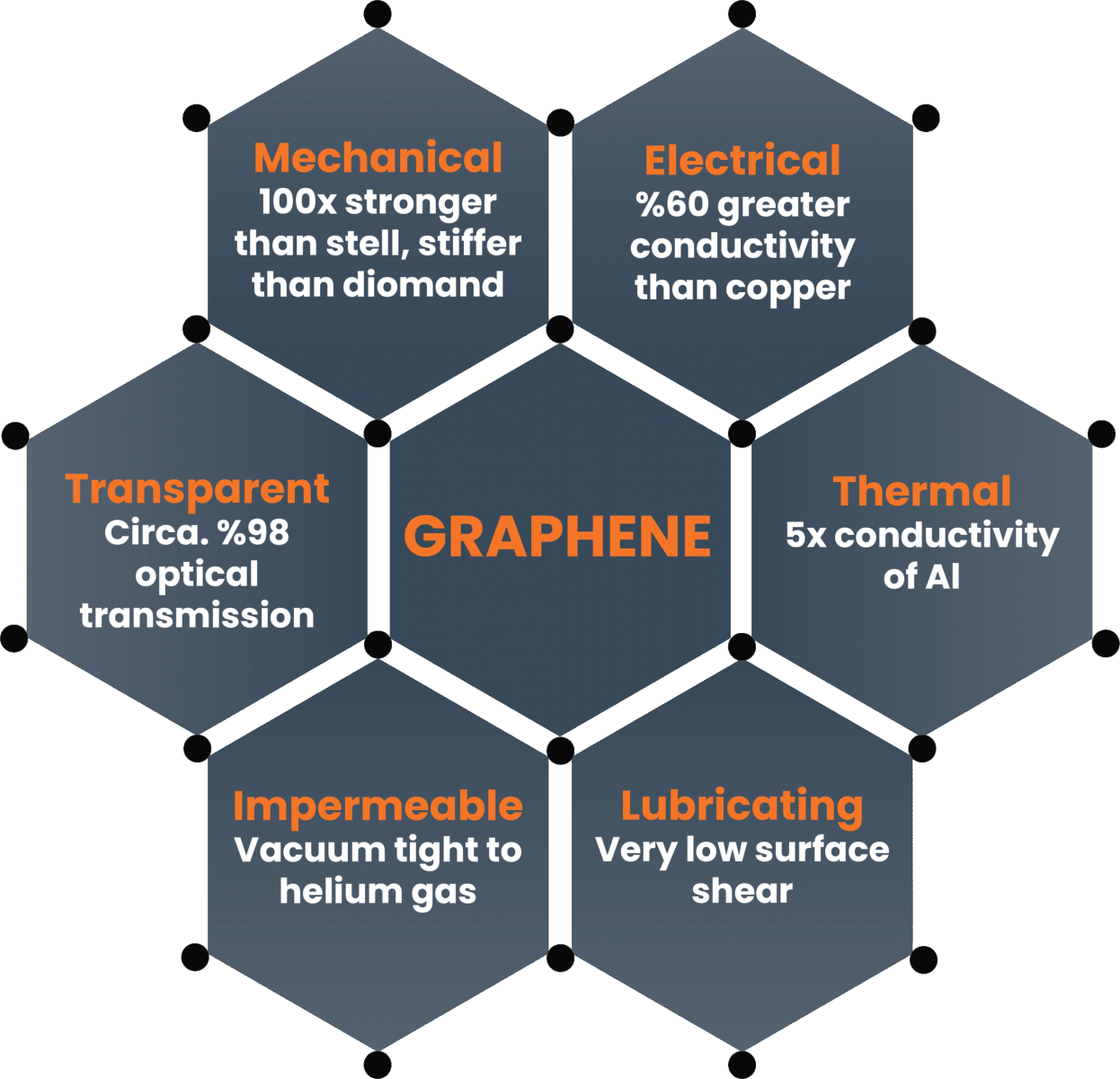- Home
- Prelims
- Mains
- Current Affairs
- Study Materials
- Test Series
 EDITORIALS & ARTICLES
EDITORIALS & ARTICLES
Is India missing the graphene bus?
- Graphene to materials is as important as Artificial Intelligence (AI) for software and quantum computing for computers.
- These emerging technologies will change the existing human-machine interface in the next couple of decades.
- India is among the leaders in AI and a potential challenger in quantum computing but India needs to catch up in the area of graphene.
What is Graphene?
- Definition: Graphene is the world''s thinnest, strongest, and most electrically and thermally conductive substance.
- Structure: It is a single layer (monolayer) of carbon atoms securely linked in a hexagonal honeycomb lattice.
Properties
- Graphene conducts electricity better than copper.
- It is 6 times lighter and 200 times stronger than steel.
- It absorbs only 2% of light because it is almost perfectly transparent.
- It is impermeable to gases, even those as light as hydrogen and helium.
- Graphene is stiffer and stronger than diamond.
Potential of Graphene
- Graphene has the potential to transform electricity, conductivity, energy generation, batteries, sensors and more.
- Also, when graphene is added to other materials even in small quantities it produces composite materials with dramatically transformed qualities.
Uses of Graphene
- Graphene composites are used in aerospace, automotive, sports equipment and construction.
- Graphene is used for high-performance batteries and super-capacitors, touchscreens, and conductive inks.
- Graphene sheets are used in biomedical applications because it is being hydrophobic and repel polar solvents.
- Graphene-based sensors are used for environmental monitoring, healthcare and wearable devices.
- Graphene oxide membranes are used for water purification and desalination.
- Graphene-based masks were made during COVID.
- Graphene coatings also act as protective coatings with superior chemical, moisture, corrosion, UV, and fire-resistance properties.
- Graphene aerogel is used in supercapacitors, lithium-ion batteries, environment purposes, solar or fuel cells, etc.

Graphene- Importance, Market & Research
Importance of Graphene
- Graphene is important for defence and aerospace as well.
- Graphene’s exceptional strength makes it a promising material for armour and ballistic protection.
- Graphene has the potential to absorb and dissipate electromagnetic waves.
- Due to this it is valuable for developing stealth coatings and materials that reduce radar signatures and electromagnetic interference.
- It is highly sensitive to environmental changes which makes it an excellent candidate for sensing chemical and biological agents, explosives, radiation, and other hazardous substances.
- Graphene-based materials can protect us against chemical and biological attacks.
- Better energy storage and electronics properties make graphene attractive in defence and aerospace as well as in civil and commercial applications.
Graphene Market Size
- The global graphene market size was valued at $175.9 million in 2022.
- It is expected to increase at a CAGR of 46.6% between 2023 and 2030.
- Graphene was discovered in 2004, it was difficult to produce high-grade large-scale graphene.
- Over 300 companies are producing graphene or its derivatives and a minimum of one product related to graphene was launched every week in 2022.
Graphene Research
- Leading graphene research countries are China, the U.S., the U.K., Japan, South Korea, Russia, and Singapore.
- Till 2012, the United States dominated graphene-related patent filing.
- South Korea and China matched the US between 2013 to 2016.
- China filed 218 patents alone while the other leading countries together filed 79 patents in 2018.
- India filed 8 patents in 2018.
Graphene Production
- China and Brazil are global leaders in the commercial production of graphene.
- India produces graphene about one-twentieth and one-third of China and Brazil’s production respectively.
Graphene Manufacturers and Researchers in India
- India has made more development than many other countries.
- Several years ago, the Centre for Nano Science and Engineering at IISc Bangalore collaborated with KAS Tech to develop a graphene-based technology.
- In India, certain start-ups and overseas subsidiaries are developing graphene or graphene derivatives.
- Notably, Tata Steel has succeeded in producing graphene (domains of 50 micrometres in size) and extracting atomic carbon from steel surfaces via annealing.
- It has also combined graphene with discarded plastic items to repurpose them as new.
- India''s specialisation will be graphene-based innovation.
- It discovered how graphene oxide-based preservative-loaded wraps may extend the shelf life of fruits and vegetables.
- Log 9, an IIT Roorkee-incubated company, has patented a method for graphene-based ultracapacitors.
- RF Nanocomposites, an IIT Kanpur-incubated company, has developed EMI shielding and stealth technology utilising graphene-based nanotubes.
- The establishment of the India Innovation Centre for Graphene in Kerala was a commendable move in this regard.
- The Digital University Kerala is implementing it in collaboration with Tata Steel and C-MET, Thrissur.
- The Centre must serve as a focal point for large-scale graphene innovative activities.
Role of Government
- Governments play a critical role in the Graphene ecosystem.
- In its 13th Plan, China designated graphene as a priority.
- In 2013, Europe established the Graphene Flagship with $1 billion in funding.
- India can establish a national graphene mission, similar to the National Green Hydrogen Mission.
India needs to be among the graphene leaders. Due to the high cost-to-volume ratio for high-grade graphene, its manufacturing may become regionalized, similar to how semiconductors are produced now. Midway through the 1990s, India missed the semiconductor opportunity but now is the moment to capture the graphene opportunity.









 Latest News
Latest News General Studies
General Studies